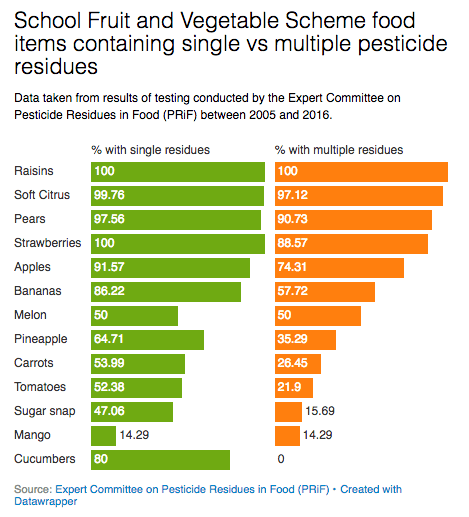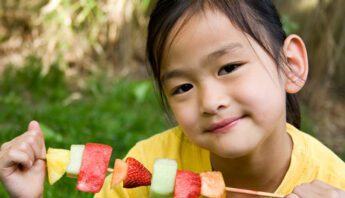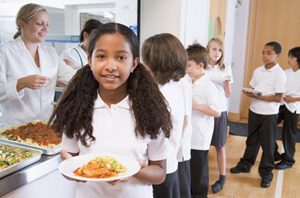A report released earlier this month from Pesticide Action Network (PAN) UK found that children across England are exposed to significant pesticide residues in the government’s “School Fruit & Veg Scheme.”
A report released earlier this month from Pesticide Action Network (PAN) UK found that children across England are exposed to significant pesticide residues in the government’s “School Fruit & Veg Scheme.” Food for Thought documents more than 123 different pesticides on school produce, and calls on officials to source more local, organic produce to protect schoolchildren’s health.
The report draws on analysis of 12 years of pesticide residue data, and among key findings reveals that produce provided in the school program has significantly higher residues than mainstream produce found on supermarket shelves.
In 2015, for example, 90% of school program apples contained the residues of multiple pesticides, while for conventional apples in the supermarket this figure was just under 60%.
Undermining health goals
The government’s fresh produce scheme is designed to encourage healthy eating habits in kids, and PAN UK states that they in no way mean to stop children eating the fruit and vegetables they need.
Yet many of the detected pesticides have well-documented potential to harm human health, with links to cancer, hormone system disruption and neurodevelopmental delays. Young children are particularly vulnerable to these impacts.
Another key finding is that much of the produce showed multiple residues, a serious concern as the scientific community still has little understanding of the complex interaction of different chemicals. One hundred percent of raisins analyzed had multiple pesticide residues, with soft citrus, pears and strawberries all close behind.

The second most frequent pesticide detected, found in a fifth of all produce samples, was chlorpyrifos — a brain-harming insecticide that has almost no permitted uses in the UK, and is the target of an ongoing national campaign here in the U.S.
Taking steps to protect kids
PAN UK’s goal with Food for Thought was to raise parents’ awareness of the pesticide residues on school produce — and that they have. The report has been covered widely by British newspapers and has reached thousands of people online.
The authors recommend specific action as well, calling for sourcing more of the produce for the program from UK growers, and to switch all of the produce to organic — a solution that would cost just 1p extra per child, per day (about $x). They also urge the Department of Health to take an active role in ensuring pesticide rules stay strong as England takes steps to leave the European Union.
Congratulations to PAN UK on the release of this important report. If you’re curious about what pesticide residues might be on your produce here in the U.S., check out our online resource, What’s On My Food.







